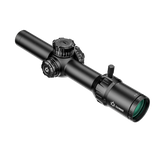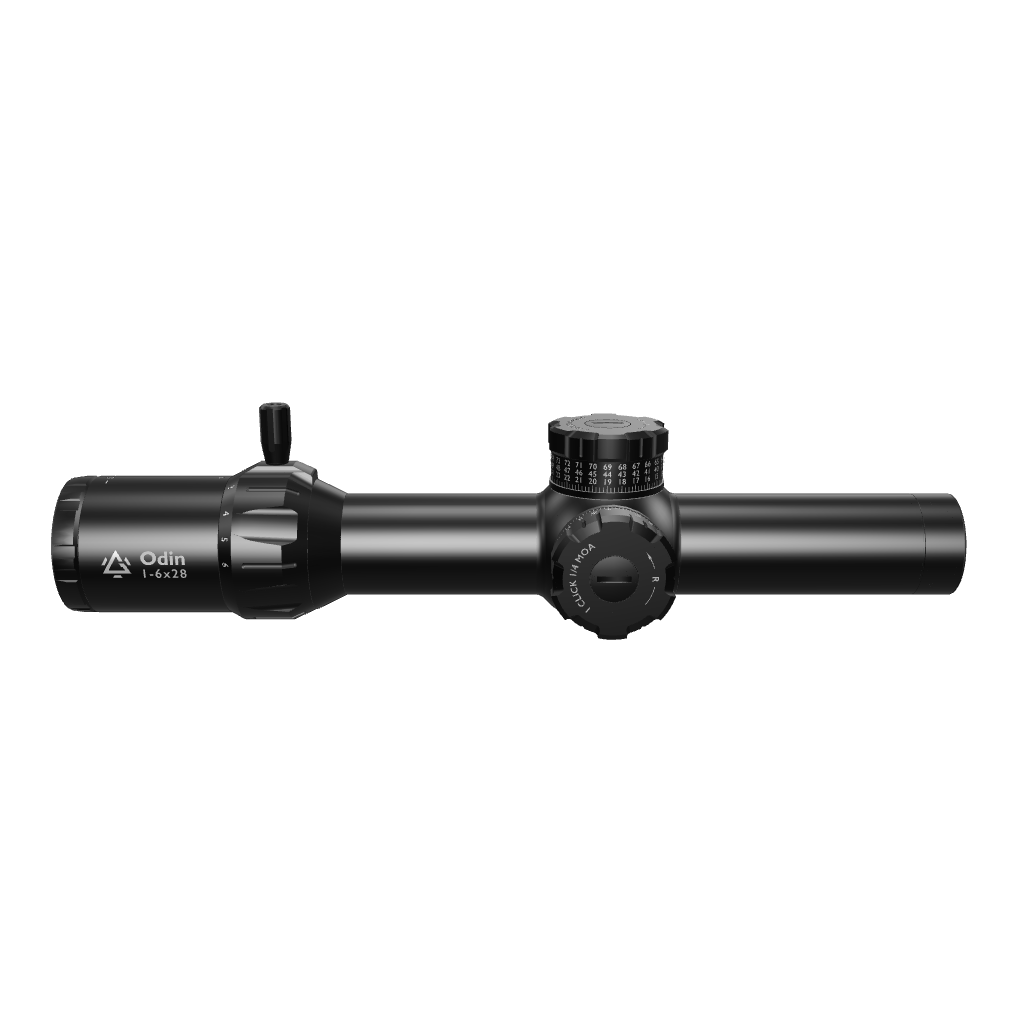Technical Analysis of Field of View (FOV) and Eye Box Forgiveness
In shooting and tactical applications, LPVO are popular because of their versatility, allowing shooters to switch seamlessly from low to high magnification. For beginners, understanding two key features Field of View (FOV) and Eye Box Forgiveness can significantly improve aiming speed and overall shooting experience.
What Is Field of View (FOV)?
Field of View (FOV) refers to the amount of the scene you can see through the scope. It's usually measured either as an angle or as the width of the visible area at a distance of 100 yards.
Imagine you are holding a rifle fitted with an optic and standing 100 yards (≈91 m) from a wall.
-
If the FOV is 5 degrees, your visible area through the scope forms a 5° wedge. At 100 yards that wedge spans about
For LPVOs, a wider FOV than many other scope types means you can see more of the surrounding environment while aiming, which is important for tracking moving targets or quickly identifying potential threats.
The size of the FOV changes with magnification: at low magnifications, the field of view is typically wider, aiding in rapid target acquisition; at high magnifications, the field of view narrows but provides more precise detail observation. This design advantage allows the LPVO to strike a balance between quick close-range aiming and precise long-range shooting.
What Is Eye Box Forgiveness?
Eye box forgiveness refers to an optic's ability to provide a clear, full sight picture without parallax error, even when the shooter's eye is not perfectly aligned with the scope. It is closely related to eye relief and head position.
An optic with generous eye box forgiveness allows shooters to maintain a usable sight picture while moving or aiming quickly, without having to line up their eye with perfect precision. This improves both aiming speed and overall comfort.
For beginners, high eye box forgiveness means fewer aiming errors caused by slight head movement, making the learning process smoother and reducing eye strain. Well designed LPVOs usually strike a balance between a wide field of view (FOV) and good eye box forgiveness, helping shooters maintain a stable sight picture during quick target acquisition.
Field of View vs. Eye Box Forgiveness
Although FOV and eye box forgiveness both affect the shooting experience, they are not the same:
-
FOV determines how much of the scene you can see it's about "visual coverage."
-
Eye Box Forgiveness determines how much freedom you have in eye position it's about "tolerance for misalignment.”
It's important to note that a wide FOV does not guarantee good eye box forgiveness. An optic can offer an expansive field of view, but if its eye box forgiveness is poor, even small head movements can cause a distorted or partially blacked-out image. When choosing an LPVO, both factors should be considered together.
Impact on Quick Target Acquisition
A wide FOV helps shooters locate targets faster, especially in close range or dynamic environments. Eye box forgiveness ensures that even while moving or adjusting shooting position, the sight picture remains stable and usable. Together, these features significantly enhance quick target acquisition and overall shooting efficiency.
For example, in tactical shooting or competition scenarios, low magnification with a wide FOV lets you quickly scan the environment, while good eye box forgiveness allows you to snap onto targets without having to perfectly align your head position. This combination enables faster, more confident shooting without disrupting your point of impact due to slight shifts in posture or eye position.
How to Choose the Right LPVO
When selecting an LPVO, especially for beginners, prioritize the following factors:
-
Wide Field of View (FOV): Makes it easier to identify targets and maintain situational awareness.
-
Generous Eye Box Forgiveness: Keeps the sight picture stable and comfortable even with slight head movement.
-
Hands-On Testing: Try the optic both at low and high magnification in-store or at the range to evaluate FOV and eye box forgiveness.
-
Application Fit: Consider your primary use case (competition, hunting, or tactical shooting) to balance magnification range and comfort.
Testing in real world conditions will help you choose an LPVO that combines wide FOV and strong eye box forgiveness, giving you faster target acquisition and more consistent shooting performance.
Conclusion
Understanding the difference between LPVO field of view and eye box forgiveness is essential for improving your shooting experience and efficiency. A wide FOV lets you see more and scan faster, while good eye box forgiveness ensures a stable sight picture even during movement or rapid aiming. Together, they boost quick target acquisition, enhance comfort, and maintain accuracy across different shooting scenarios. Mastering these concepts and practicing them in real use will let you take full advantage of your LPVO's performance and achieve consistent, accurate results.









